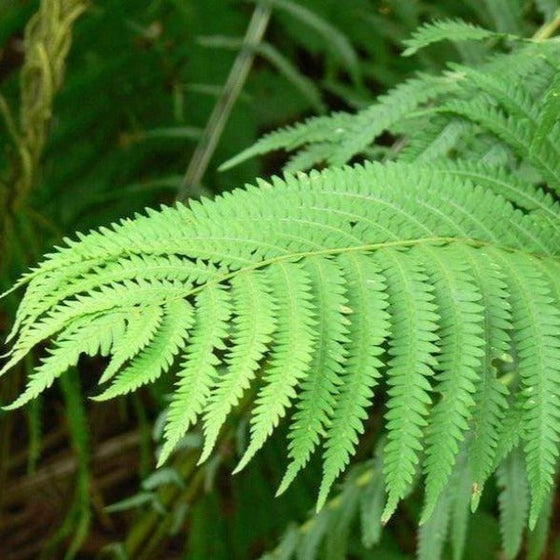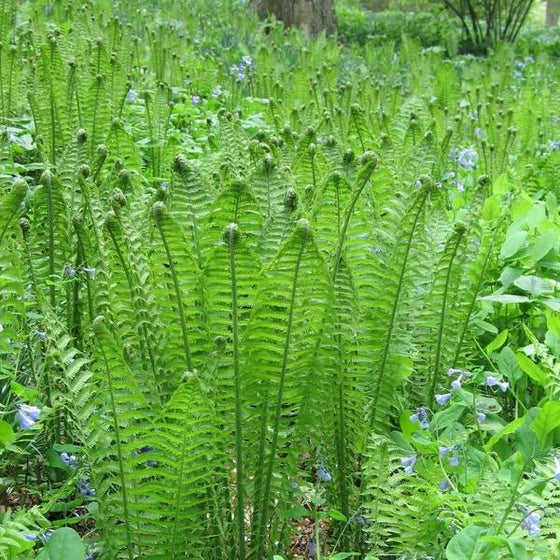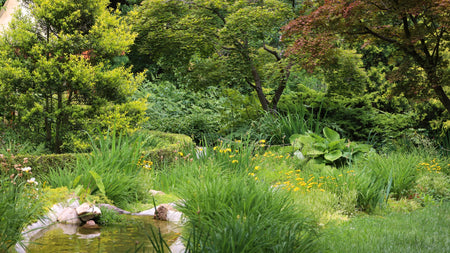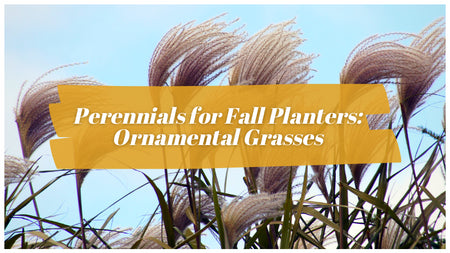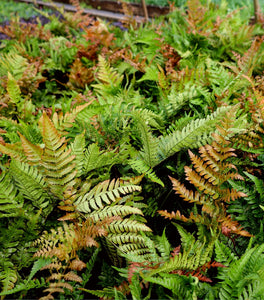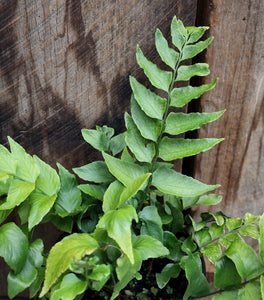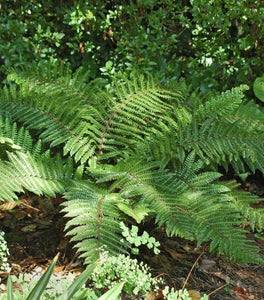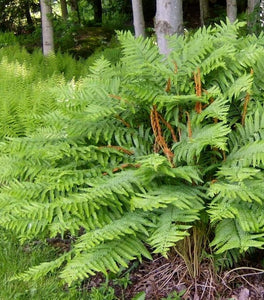
Images Depict Mature Plants
Lush, Feathered Texture for Woodland Gardens and Shade Borders
Native Beauty That Brings the Forest to Your Garden
The Matteuccia struthiopteris, commonly known as Ostrich Fern, is a hardy native perennial celebrated for its tall, feathery fronds and graceful, vase-shaped habit. With arching green plumes resembling ostrich feathers, this fern transforms shady spaces into cool, serene retreats — adding texture, height, and natural elegance to any landscape.
Hardy, Adaptable, and Low-Maintenance
Ostrich Ferns thrive in full to partial shade and moist, rich soils, but they also adapt to a variety of conditions once established. They spread gradually by underground rhizomes, forming lush colonies that fill shady corners, woodland edges, and streambanks. Perfect for gardeners who love dramatic foliage but prefer easy care, these ferns deliver timeless beauty with minimal effort.
Perfect for Moist or Shady Landscapes
This fern excels in areas where many perennials struggle — damp, shaded zones or along water features. It pairs beautifully with hostas, astilbes, and Japanese forest grass for layered texture. In the right spot, Ostrich Fern creates a living backdrop that’s both lush and low-maintenance.
Four-Season Interest and Natural Heritage
In spring, new fiddleheads unfurl with bright chartreuse color and captivating texture. By midsummer, the plant reaches its full height of 3–6 feet, providing an airy vertical structure. Even in winter, the dried fronds add sculptural appeal. Native to North America, the Ostrich Fern also contributes to biodiversity, providing cover for small wildlife.
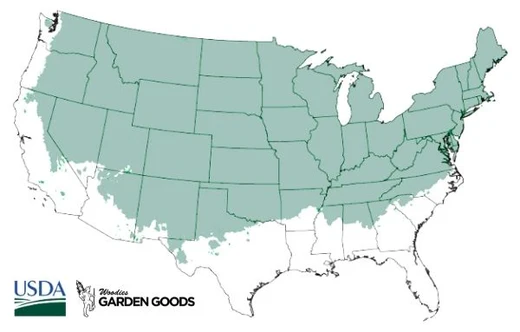
| Botanical Name | Matteuccia struthiopteris |
|---|---|
| Hardiness Zone: | 3-7 |
| Mature Height: | 3 to 6 Feet |
| Mature Width: | 2 to 4 Feet |
| Sunlight: | Partial to Full Shade |
| Water Requirements: | Moderate to High |
| Soil | Moist, rich, well-drained soil |
| Resistance | Deer-resistant; hardy to -30°F |
| Landscape Uses | Woodland gardens, shade borders, moist areas, naturalizing, erosion control |
How to Care for Ostrich Fern
After purchasing your Ostrich Fern, be sure to read about the recommended care instructions to ensure a happy and healthy plant for years to come.
How should I plant Ostrich Fern?
Select a shaded or partially shaded site with moist, rich soil. Loosen the soil to a depth of 12 inches and incorporate organic matter like compost or leaf mold to enhance fertility and drainage. Dig a hole slightly wider than the root ball, place the fern so the crown sits just above soil level, then backfill and firm gently. Water deeply to settle the roots. For mass plantings or naturalized areas, space Ostrich Ferns about 18–24 inches apart. They’ll gradually fill in to form a lush colony over time. Mulch with organic material to conserve moisture, regulate soil temperature, and mimic the fern’s natural woodland habitat.
How often should I water Ostrich Fern after planting?
Keep the soil consistently moist, especially during the first growing season. Water deeply one to two times weekly, ensuring that moisture penetrates the root zone. Ostrich Ferns thrive in evenly moist conditions, but they do not tolerate prolonged standing water. Once established, they handle short dry spells but still appreciate regular watering during hot or dry weather. In drier climates, mulch helps retain soil moisture and reduce watering frequency.
When should I fertilize Ostrich Fern?
Apply a balanced slow-release fertilizer in early spring as new growth emerges. A gentle feeding encourages strong frond development and vibrant color. Alternatively, top-dress with compost or aged leaf litter for a more natural, organic approach. Avoid over-fertilizing — Ostrich Ferns prefer nutrient-rich soil over concentrated feeding. Too much fertilizer can produce weak, overly lush fronds prone to damage.

When and how should I prune Ostrich Fern?
Cut back dead or damaged fronds in late fall after frost or in early spring before new fiddleheads appear. Removing old growth allows fresh fronds to unfurl cleanly. Use sharp shears and dispose of debris to maintain plant health. During the growing season, pruning is rarely necessary — simply remove any brown or tattered fronds to keep the plant tidy. The dried, upright fertile fronds can be left in winter for texture and wildlife value.

